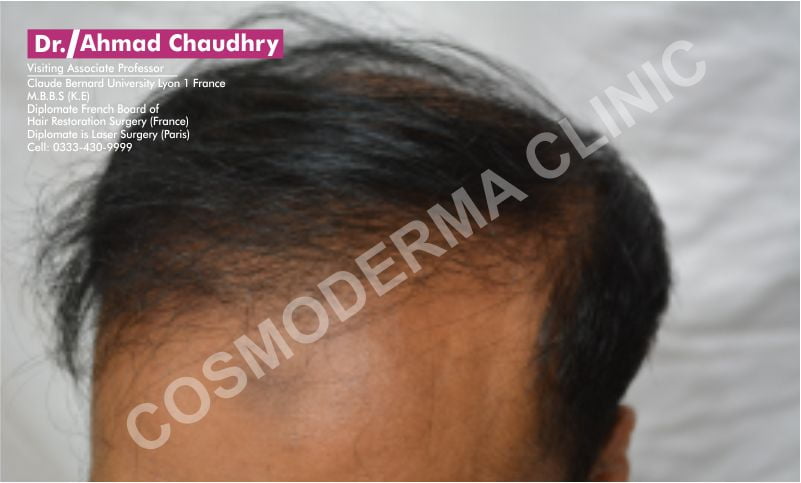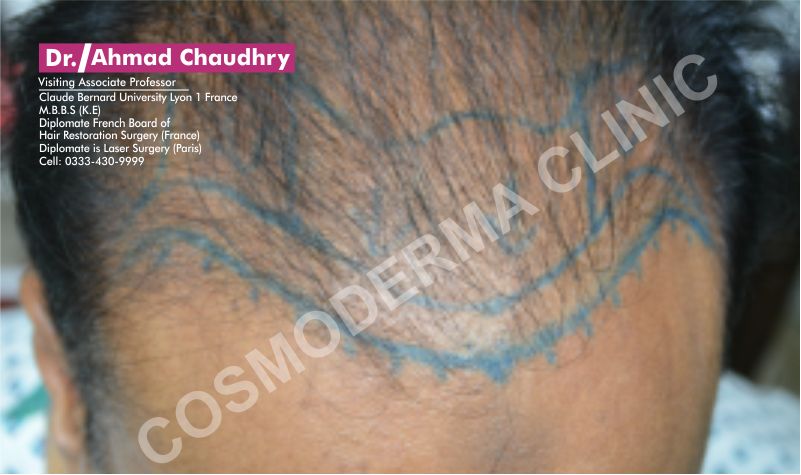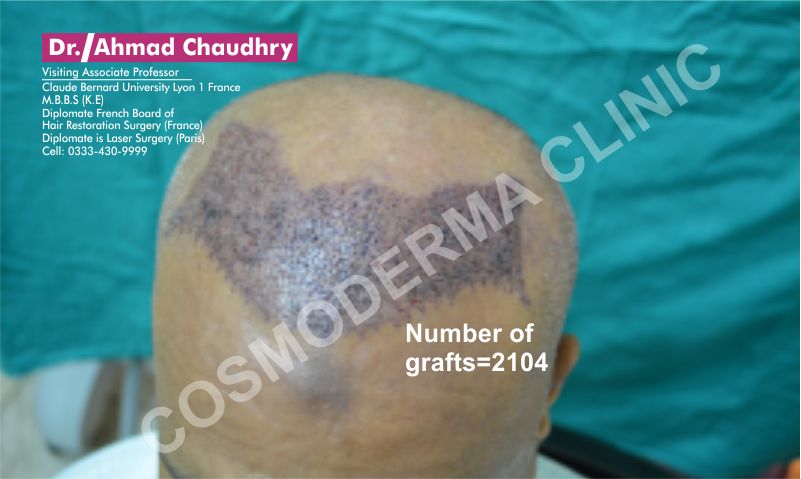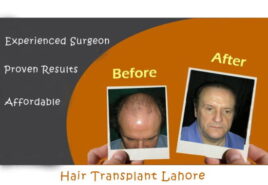Hair transplant surgery is done in two ways; the strip method and the Follicular Unit Extraction (FUE) method. The strip method involves removal of a strip from an area of good density, which is usually found at the back of the head and planting it on the bald area after dissecting it into smaller units. The FUE method involves extracting follicles from a good density area and then planting them one by one on the bald area. The FUE method is more technical due to the manual work required and the results produced. Not all surgeons can perform the FUE method properly due to the observation and care needed for it. Candidates prefer the FUE method due to the natural results that are produced by the plantation of individual follicles which are not produced by planting units of strip. The doctor has to observe the natural pattern of growth, gaps between each follicle and the direction of these hairs to ensure a 100 percent natural look. Usually, doctors take photographs of their patients before and after the procedure to be able to see what kind of a change has been brought about by the hair transplant. These pictures can show the patient directly what the difference of hair growth looks like. However, the procedure steps must also be clearly known to the patient in order to be able to keep a realistic approach about end results.
The FUE hair transplant candidate must first of all look for a good surgeon, well-reputed for his skills and once the surgeon is chosen, he observes the candidate’s scalp to assess the reasons of baldness and then decides the number of grafts needed to cover the bald patch. The patient is briefed about the results and is prepared with what to expect from the surgery. Once all factors have been discussed the patient is prepared for the surgery. The scalp is washed thoroughly before the surgery in order to remove any residue on the scalp. This ensures a smooth procedure and a better result due to the clean follicles extracted. Once the surgery is underway, the patient is given local anesthesia and the transplant is started. After the whole procedure is done, the surgeon gives a post surgery care routine briefing to the patient. This includes some preventive steps to avoid any pain or infection. The routine includes taking a regular painkiller to avoid headaches, which usually occur after hair transplant surgery. Some candidates might experience more pain due to their scalp type. If a person has tight skin on the scalp he may feel an irritating pull on the head. Similarly, if the frontal hairline is worked on , the patient might feel a stressed feeling on the forehead. Apart from the painkiller, the doctor prescribes antibiotics to avoid any infection and in case of strip method surgery, the wound from removing the strip to heal quickly. These medicines are only prescribed for a few days since none of the side effects of hair transplant surgery linger for a longer period of time. Usually after any kind of surgery, hair loss occurs. This hair loss is also referred to as shock loss since it is a result of the body going through an interference of strong anesthesia and cuts and fixes. This causes all the transplanted hair to fall off but this is nothing to worry about. The surgeons always prepare their patients about this hair loss so that the recipient does not panic in case he sees a bald patch again. However, since the roots are intact under the scalp, new hair starts appearing within a period of three months.
Fue hair transplant before and after photos
Day 1 after Fue hair transplant in Lahore Pakistan by Dr. Ahmad Chaudhry.
People also search
| 3100 grafts before after | 27866 grafts photos |
| 1938 grafts before after | 3017 before and after |
For free consultation | +923334309999






